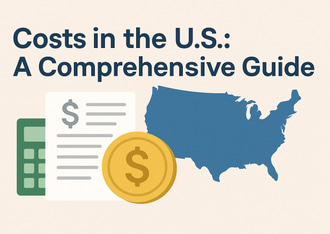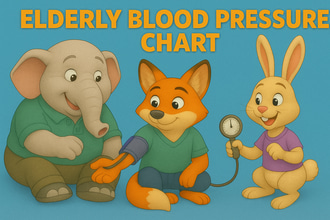1. Improve sleep: sleep is a critical factor in improving memory. Dr. Matthew Walker’s research demonstrates why:
a. Deep Slow-Wave Sleep (non-REM) facilitates the transfer of short-term memories from the hippocampus to the neocortex for long term storage. Deep Slow-Wave Sleep (SWS) is a critical stage of non-REM sleep and plays a critical role in memory consolidation which is the process by which new information is integrated into our long-term memory. When awake, the hippocampus temporarily stores new information. During SWS, the hippocampus and neocortex engage in a synchronized dialogue facilitated by slow oscillations (0.5-1 Hz) in the neocortex, spindled (12-16 Hz in the thalamus and wave ripples in the hippocampus creating the transfer of memory traces from the hippocampus to the neocortex for long-term storage.
Frontiers
The reason SWS is Critical for Long-Term Memory is because memories are not only stabilized but also reorganized linking new information to existing knowledge networks in the neocortex allowing for memories to be more accessible over the long run. Deep Slow-Wave Sleep clears hippocampal capacity by transferring memories and removing unimportant information to maximize retention for what matters.
It is important to note that individuals deprived of SWS have significant deficiencies in emory consolidation, particularly in fact-based memories.
Improving your SWS will improve your memory. The practical ways to improve your memory include maintaining consistent sleep schedules, avoiding sleep disruptors like caffeine and alcohol, creating sleep conducive environments with minimal light and noise, and considering techniques like mindfulness or relaxation to create deeper sleep.
b. REM Sleep aids in the integration of new information into existing knowledge networks, fostering creativity and problem-solving.
REM has been proven to help facilitate the blending of new information and older memories. This process helps form abstract connections so that we don’t understand and learn solely from memorization. This enables the brain to combine ideas that are not obviously related. REM also boosts creativity by 40%.
PNAS
The hippocampus and neocortex communicate significantly less in REM than in SWS which allows the neocortex to independently organize and connect information. High levels of acetylcholine during REM amplify this process which creates more flexibility of thought and learning. Dreams during REM also stimulate the brain by creating different types of challenges to overcome. This rehearsal is part of the reason why REM helps problem solving and creativity.
The best way to get better REM sleep is by having consistent sleep schedules, and less stress.
c. Sleep, especially SWS, is critical for clearing beta-amyloid proteins from the brain which significantly reduces Alzheimer’s risk.
Beta-amyloid is a product of brain activity that can accumulate between neurons. This causes plaques which significantly increase the risk of Alzheimer’s disease interfering with neuronal communication and leading to inflammation. The glymphatic system clears this waste by acting as a pathway that is activated when sleeping. This happens mostly during SWS where brain cells shrink by up to 60% resulting in higher cerebrospinal fluid flow. This flow removes beta-amyloid and other toxins.
Sleep deprivation, even a single night of lack of sleep can raise beta-amyloid levels in the brain. When sleep deprivation is consistent it impairs the glympahatic system leading to an accumulation of bela-amyloid leading to a higher risk of Alzheimer’s. There is scientific evidence demonstrating that glyphatic clearance of beta-amyloid is up to 60% more efficient during sleep compared to wakefulness.
Practically, enhancing SWS through non-invasive techniques such as auditory stimulation synchronized with slow-wave oscillations will boost beta-amyloid clearance. Any sign of sleep disturbance could be a symptom of Alzheimer’s, early intervention is therefore possible. The best way to prevent this sleep disturbance is to maintain consistent sleep schedules, minimize blue light exposure before bedtime and manage stress.
d. Given that stress causes spikes in Alzheimer’s risk, understanding how REM reduces stress is a key factor in understanding how to retain memory.
During REM the brain replays experiences that have been considered emotional, usually encoded in the amygdala. This happens in a safe, and low stress context which helps the process emotional content. REM also involved a drop in noradrenaline levels which tend to spike when something emotional happens during waking hours. Once these are revisited during REM, memories will retain their factual content but lose the emotional aspect associated with that content. This allows for the brain to overcome events that are traumatic and enables the brain to function on a daily basis without suffering negative emotional consequences. There is evidence for all of these points in neuroimaging studies: fMRI scans show reduced amygdala activity after REM sleep which indicates less emotional reactivity.
REM sleep improves emotional control which helps people manage stress.
Emotional dysregulation, common in sleep-deprived individuals, can worsen cognitive symptoms in dementia.
The amygdala is responsible for processing emotions. It becomes hyperactive without sufficient sleep. During this process, emotional responses to everyday stimuli get exaggerated. This is why people overreact when they haven’t gotten enough sleep. The prefrontal cortex also becomes less connected to the amygdala when sleep deprived. It is responsible for regulating emotions and thinking coherently. Sleep deprivation impairs the brain’s ability to control its emotional reactions. It also increases stress and neuroinflammation as chronic stress contributes to neuroinflammation. Neurofinflammation accelerates cognitive decline and worsens dementia symptoms.
REM Sleep normalizes amygdala activity, strengthens prefrontal cortex connection and separates negative emotions from memories. This reduces emotional imbalances, lowers stress and helps retain memory.
2. 5 minutes of low-impact exercise immediately after learning can enhance memory retention
Adrenaline is proven to strengthen the encoding of newly learned information that gets stored into long-term memory. There is extensive scientific evidence demonstrating that individuals who perform low-impact exercises such as cardio, step exercises immediately after being given new information, retain that information at a much higher rate compared to those who were sedentary previously to receiving the new information.
Cognitive Research Journal
Exercise stimulates hippocampal activity and promotes the release of neurochemicals like brain-derived neurotrophic factor (BDNF) which supports the growth and connection of neurons critical for memory processing.
Even 5 minutes worth of exercise immediately post learning creates a significant boost in memory retention.
3. Enhancing the recall process by stimulating the hippocampus and associated regions in the brain facilitates faster and improved retrieval of information stored.
Activating the Hippocampus is key in accessing both episodic and declarative memories. The stimulation strengthens neural pathways involved in recall. Recall exercises improve neuroplasticity. Neuroplasticity is the brain’s ability to recognize and form new neural connections which allows us to access memories easily.
Recall techniques include using mnemonic devices, playing memory games, spaced repetition, chunking information, contextual learning, and meditation.
a. Mnemonic devices work by linking new information to familiar patterns, images and words by leveraging associative memory. They connect between the hippocampus and neocortex – associating complex information and simplified cues.
b. Memory games include matching games, and trivia games that require recalling memorized items. They encourage hippocampal engagement and improve speed and accuracy in information retrieval.
c. Spaced repetition: reinforced memory by repeatedly showing materials previously learned but at increased intervals. This strengthens synaptic connections especially in the hippocampal circuits.
d. Chunking information is a technique that involves breaking down complex information into smaller chunks. This helps reduce cognitive load and is a more effective way to retrieve hippocampal processes. Scientific evidence suggests that chunking improves recall by up to 40% compared to straight memorization.
e. Contextual learning: learning information in the same or similar contexts. Environmental memory improves the recall process.
f. Meditation and mindfulness reduces stress and stress negatively affects the ability to recall information.
4. Molecular and cellular mechanisms such as CREB activation, AMPA/NMDA receptor trafficking, neuromodulation and metabolic processes all enhance memory formation and retention.
CREB (cAMP response element binding protein) is a transcription factor that regulates gene expression related to long term memory and synaptic plasticity. Its activation facilitates the synthesis of proteins that are essential for strengthening synapses and forming long-lasting memories. When CREB has been enhanced pharmacologically or genetically in animal models it has led to significant improvements in their learning and memory tasks. Drugs that target CREB pathways are currently undergoing human testing to help reduce likelihood of Alzheimer’s disease. Read more here.
AMPA receptors allow for fast synaptic transmission. They are critical for short term plasticity. Drugs enhancing AMPA receptor activity such as ampakines have proven to improve cognitive performance.
NMDA receptors detect neural activity which triggers long-term potentiation which strengthens synaptic connections.
The movement of both of these receptors to and from the synaptic membrane regulates synaptic strength which helps in memory retention.
5. Neuromodulation also helps with memory retention. It is a technique that alters nerve activity – the way your nerves carry information to and from the brain.
a. Dopamine enhances reward-based learning by strengthening the connections to the hippocampus and prefrontal cortex. It helps the brain prioritize and store information that is considered important. This helps with long-term memory as it signals what’s rewarding.
b. Adrenaline is released during events that are considered exciting. This process strengthens the connections to the amygdala-hippocampus as the body activates a fight or flight response – releasing adrenaline. This triggers the release of neurochemicals that enhance memory encoding. The amygdala is what processes events of emotional significance and flags them as significant. Adrenaline creates a spike in amygdala activity which makes those events more memorable.
The Hippocampus is responsible for encoding and consolidating memories. When there is a spike in amygdala the hippocampus gets activated and works efficiently to store these memories leading to increased memory retention.
Adrenaline increases norepinephrine in the brain in areas like locus coeruleus. This enhances alertness and attention during the encoding phase. This allows the brain to focus on more important events and therefore increases memory retention. Adrenaline release enhances synaptic plasticity which strengthens the connections between the neurons involved in memory formation. This is why people vividly remember high emotion events in their lives whether it’s a graduation, or a death in the family. The pathway responsible for this is the amygdala-hippocampus connection. Artificially creating adrenaline after learning improves memory retention. The opposite also holds true, using beta-blockers which inhibit adrenaline are used to reduce any emotional intensity felt when remembering traumatic memories.
Acetylcholine is a neurotransmitter that enhances attention, focus and learning. It enables neurons to communicate effectively by increasing the activity of neural circuits involved in attention, strengthening the neural connections required for memory encoding in the hippocampus (vital for creating new memories), and facilitates sensory processing by ensuring that your brain allocates resources for tasks that are considered important. This inherently improves memory and retention. The best ways to enhance the levels of acetylcholine naturally are to eat foods rich in choline like eggs, beef liver, chicken, fish, soy and vegetables. Healthy fats found in walnuts and flaxseed also help. Hydration boosts acetylcholine production as well. Exercising and sleeping well are also significant ways to stimulate acetylcholine release. Supplements, mental stimulation activities and limiting alcohol and smoking are all key factors in optimizing your brain’s use of acetylcholine leading to better memory.
6. Growing the hippocampus leads to improved memory. Emerging research has demonstrated that stimulating the sense of smell can grow the hippocampus which slows cognitive decline and enhances memory in both dementia and non-dementia patients.
Olfactory therapy is therefore a great way to improve your memory. Daily aroma routines like exposing yourself to strong smells such as lavender, citrus and rosemary can help stimulate olfactory senses. I recommend using diffusers or essential oils for easy set up.
Rotating scents is also useful to avoid any adaptation and maintain stimulation and effectiveness.
7. Identifying personal or familiar scents is also a very useful tactic. Smelling the perfume of someone you knew from childhood, a favorite flower, a dish a relative used to make are all different examples of smells that might have personal significant significance and help improve memory. Custom scent kits are also available for purchase and tailoring them to scents associated with personal history is good best practice.






































































